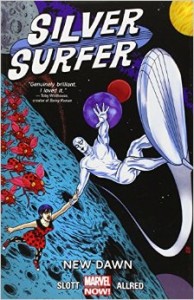So, you’ve got your setting and your premise for the story. But you don’t know who the characters are, don’t know how to make the premise personal.
Here’s some questions to ask yourself that might help put a face to the story you’re looking to tell.
Who has the most to gain? What would they need to do to accomplish it? Who would stand in their way?
Who has the most to lose? How can they resist such a loss? Who is taking it from them? How?
Who does this setting exploit? To what end? What recourse to they have?
Who does this setting/situation deprive of a voice? What systems or characters enforce that oppression?
If you’ve got a gee-whiz worldbuilding element – a magic style, a new technology, a weird feature of the world, think about these questions:
Who uses the magic/tech? Who can use it, and who uses it when they’re not supposed to?
What does the magic/tech make easier? Whose work or power does it undermine? Who does it most benefit from it?
Who lives in the special place? Who is most disadvantaged by the special place? Who stands to gain the most from the existence of the special place?
These questions are informed by a number of theories and ideas. There’s a thread of postcolonial scholarship called Subaltern Studies, focusing on post-colonial/post-imperial societies, many of whom practice an approach called ‘history from below,’ which I think is a great framework for going back to first assumptions in casting a story, especially in traditional fantasy.
Traditional fantasy is history from above – it’s the story of kings and princes and powerful wizards, of conquerors and saviors. Some fantasy stories to take the history from below perspective, but I think that there is a lot more to be done there. Many writers come to the genre and default into the expected cast – writing fantasy without princesses and grand wizards and mighty knights is missing the point for some people.
Another interesting thing that happens if you take a history from below approach is that the scope and scale of stories change. The destined farmboy seldom stays at his low socio-economic status as he becomes the hero. The orphan girl who is secretly the princess gets her inheritance, is raised to the nobility.
But what happens when you have a lead who starts and stays in their low socio-economic status? Not just a hero who has grand adventures and then settles down, but someone who is constrained by society such that the grand adventures they have are similarly bounded. There’s a danger in SF/F of taking the low-status hero and removing them entirely from their original context, which creates a kind of brain-drain and erasure – the poor orphan is chosen as a hero because they can then have an epic rise in status and leave their dreary old life behind. But the story quickly leaves their original context and seldom returns – it’s a story more about knights and princes and kingdoms at war, where the hero’s original life and concerns are left entirely behind.
Escaping a bad situation to make a better life for yourself is all well and good, but there’s a lot to be said for taking a different approach, where characters deal directly with their social situation, struggling directly with oppression, marginalization, systemic injustice, and so on. Because billions of real people deal with that every day. And if the only stories we write are ‘be lucky enough to escape your situation and everything will be better!’ it re-enforces the cultural notion that people deserving enough will escape the bad situation, that poverty and marginalization can only be escaped by the lucky few. It reifies the idea that marginalization, poverty, and exploitative circumstances are just back story, not a real lived reality that has to be addressed.
Stories can be anything, about anyone. I invite my fellow storytellers to feel empowered and invited to approach stories from all angles, for all peoples, to create alternatives, strategies not only for throwing down the Evil Overlord who would make night last forever, out-smarting the evil corporation to keep them from copyrighting drinking water, but also how to keep your landlord from screwing you over, how the street finds its own uses for things, and how to build a support network of people who can help one another out when the whole world is stepping on their neck.
Stories are for everyone, especially those with the fewest options.




